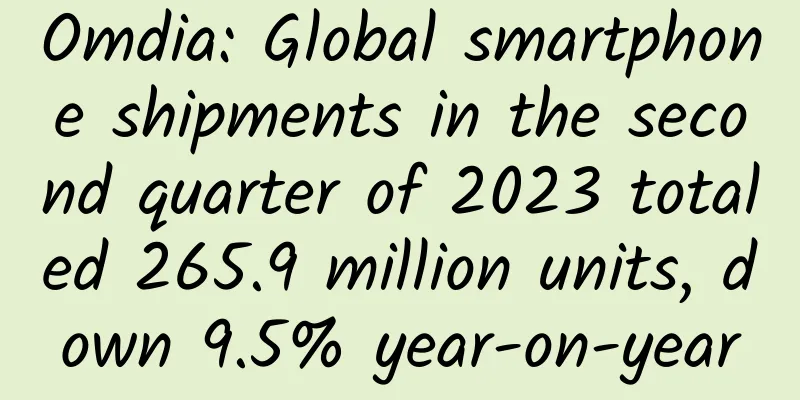How to read the Nutrient Reference Value (NRV%)?

|
In the previous article, we mentioned that NRV represents the daily requirement of the nutrient, and the NRV% indicated in the nutrition information table represents the percentage it can provide compared to the requirement. It can also be used to compare the content of a certain ingredient between different foods . For example: If the fat NRV% of one type of cookie is 51%, while the fat NRV% of another type of soda cracker is 35%, then it is obvious that the soda cracker contains less fat. However, there is a lack of comparability between different nutrients. For example, the NRV% of fat in a certain cookie is 52%, and the NRV% of carbohydrates is 20%. The percentages seem to indicate that there is a lot of fat and very little carbohydrates, but the actual content is 60.2g/100g of carbohydrates, which is twice that of fat. This is because the daily requirement of the two is different. The total amount of carbohydrates required by the human body in a day is higher than that of fat, so the NRV is set higher. Foods with high single nutrient content may have a NRV% of more than 100%. For example, the fat content of cooking oil is generally 99.9g/100g, and its NRV% can reach 167%. Therefore, we cannot simply judge the quality of food by the NRV% or the level of one (or several) nutrients. We need to make a comprehensive judgment based on the amount of food we consume. With the help of NRV%, you can roughly assess whether the intake of nutrients such as energy, fat, and protein throughout the day exceeds or is insufficient. However, due to differences in gender, weight, age, physiological status and other factors, the nutritional needs of different individuals and populations are different. If you want to manage your diet more accurately, you can also use the dietary nutrient reference intake indicators such as RNI and AI in the "Dietary Nutrient Reference Intakes for Chinese Residents DRIs (2023)". Do all nutrients have NRVs? Not really. According to GB 28050 General Rules for Nutrition Labeling of Prepackaged Foods, China stipulates that in addition to energy, there are four core nutrients ( protein, fat, carbohydrates, sodium ), saturated fatty acids, cholesterol, dietary fiber, some vitamins and minerals, totaling 32 nutrients. The role of these nutrients in maintaining normal physiological functions, growth and development, and preventing diseases has been fully confirmed. Click on the image to enlarge it For nutrients such as linoleic acid, linolenic acid, molybdenum, chlorine, and chromium, although there are corresponding RNIs or (and) AIs, it is impossible to determine a unified NRV that is applicable to the general population due to many factors such as insufficient research evidence and evaluation methods, large differences in demand among different populations, and the diverse and complex forms of nutrients in food. Therefore, not all nutrients that appear on nutrition labels have NRV%. For nutrients without NRV%, you can refer to the relevant nutrition claims or promotional terms on the food label to make your choice. For example: if the product is advertised to contain "some (or several) polyunsaturated fatty acids", you should pay attention to the content of the corresponding unsaturated fatty acids; if the food ingredient list contains "hydrogenated vegetable oil" ingredients, you should pay attention to its trans fat content. Some foods will also be marked with "recommended servings" on the nutrition label. In short, when purchasing pre-packaged foods, you need to make full use of the information on the food label and consider individual nutritional needs. With the improvement of China's food management system, the development of the food industry, the improvement of consumer awareness and changes in demand, the formulation of NRV is also constantly changing. As shown in the table below, the latest GB 28050 draft for comments has modified the NRVs of vitamin D, selenium, zinc, iodine and other ingredients, deleted the cholesterol NRV, deleted the "≤" symbol of fat and saturated fat NRV, etc. (as shown in the table below) . These changes are all based on the current nutritional needs of Chinese residents. GB 28050 (Draft for Comments) Click on the image to enlarge it Special dietary foods such as infant formula, infant complementary foods, special medical formula foods, sports nutrition products, etc., are not suitable for a unified NRV because the physiological state and nutritional needs of the target population are quite different from those of the general healthy population. However, energy and each nutrient can be replaced by the percentage of the RNI or AI of the nutrient in the group, that is, RNI% or AI%. According to GB 13432 "Labeling of Prepackaged Special Dietary Foods", the nutrition label of special dietary foods in my country only compulsorily indicates the name and content of nutrients, while RNI% or AI% is managed as a recommended item, and manufacturers can choose whether to indicate it. After deeply understanding the principles and basis for the formulation of NRV, we can easily conclude that the NRVs in different countries and regions must be different. This is because the eating habits, physical fitness levels, nutritional status, and even the economic development levels of residents in different regions are very different, resulting in different RDA, EAR, RNI, AI and other related nutrient demand indicators, which in turn affects the formulation of NRV. In addition, some countries do not have NRV, but instead use other values. For example, the U.S. Food and Drug Administration (FDA) has formulated a nutrient reference value Daily Value (DV) based on nutrient RNI and RDA that can meet the needs of most people, and has established separate standards for infants aged 1-12 months, children aged 1-3 years, pregnant and lactating women, etc. What is the use of NRV%? So does it really make sense to label NRV% on products? Can the NRV% label be cancelled, or is there a better value that can replace NRV? Although NRV% cannot let consumers know the daily intake of each nutrient very intuitively and clearly, it still plays an important role in the product selection process. Helping consumers understand their nutritional intake NRV% allows consumers to intuitively know the approximate proportion of nutrients contained in a certain food in their daily diet, thereby helping them quickly determine the contribution of the product to meeting their daily nutritional needs and arranging their diet reasonably to achieve nutritional balance. For example: a milk product is marked with a calcium NRV% of 16% (per 100ml), so you can easily convert it: after drinking a box of 200ml, nearly 1/3 of the calcium intake task for today has been completed. Promote nutrition knowledge By frequently appearing the NRV% logo on many food packages, consumers' understanding of various nutrients and their approximate daily reasonable intake can be gradually deepened, which will help popularize nutritional knowledge and enhance the public's awareness of nutrition and health. Facilitates nutritional comparison between different products When purchasing the same type of products from different brands or types, you can compare the relative content of nutrients contained in each product based on NRV%, and then choose products that better meet your nutritional needs. At present, there is no alternative labeling method that is as simple and clear as NRV% and widely applicable to all kinds of food and nutrients. If the labeling is cancelled, it will be more difficult for consumers to quickly obtain nutritional information of food and make reasonable judgments in daily shopping. For some people who need to control the intake of specific nutrients (such as diabetics focusing on carbohydrates, hypertensive patients focusing on sodium, etc.), NRV% is an important reference for their diet management. Cancelling the labeling will bring great inconvenience to the self-management of diet for such people. However, with the improvement and progress of my country's food management system and the increase in nutritional awareness and needs of the general public, there is still much room for the revision and utilization of NRV in the future. Personalized NRV With the development of science and technology and the deepening of understanding of individual differences, personalized NRV can be set according to individual age, gender, physical condition (such as whether pregnant, whether suffering from chronic diseases) and other factors. However, this requires strong database support and convenient access, such as linking with personal health data through mobile phone applications. In recent years, my country has also been continuously promoting the construction of digital labeling platforms and systems, while constantly updating relevant food standards. Although the implementation of "personalized NRV" is still difficult at present, it can be used as a direction for future development and efforts. Food grading management and labeling In addition to NRV%, we can consider adding labels similar to nutritional grades to comprehensively evaluate and grade the overall nutritional status of the product, such as high nutrition, medium nutrition, low nutrition, etc., so that consumers can have a more comprehensive understanding of the nutritional quality of the product. However, how to determine reasonable grading standards may be a problem. Enhanced Function Claims Further standardize and strengthen functional claims (such as "helps intestinal health") so that they work together with the NRV% logo to provide consumers with richer and more accurate nutritional information. NRV and NRV% are of irreplaceable importance. The management and development of my country's food industry still has a long way to go. The scientific dietary awareness and nutritional knowledge reserves of Chinese residents also need to be further improved. I believe that in the future there will be more scientific and more complete food label management methods that can meet the needs of consumers. References: [1]Dietary Reference Intakes for Chinese Residents (DRIs2023). [2]Dietary Guidelines for Chinese Residents (2022 Edition). [3] GB 28050 “National Food Safety Standard General Rules for Nutrition Labelling of Prepackaged Foods”. [4] GB 13432 “Labels of prepackaged foods for special dietary uses”. |
Recommend
Twenty-one weeks pregnant with a boy
There is a saying in folklore that if a woman has...
What should I do if I don’t sleep well before my period?
Women may experience various physical discomforts...
8 months premature
The fetus will develop in the mother's body f...
Why is my vulva painful, itchy and swollen?
For most girls, genital hygiene is very important...
Is it true that I can no longer speak after laryngeal cancer surgery?
The larynx is an important vocal organ. After lar...
World Asthma Day | Asthma is not a trivial matter, don’t let negligence cost you your life!
"No matter how time flies by, I only care ab...
A woman with a fleshy nose
We know that a girl's appearance is very impo...
What foods are good for calcium supplementation? The 10 best foods for calcium supplementation
Calcium is one of the most important elements for...
What underwear should I wear if I have small breasts?
Nowadays, the requirements for beauties are getti...
What is the cause of foamy leucorrhea?
We all know that leucorrhea is a physiological ph...
What do swans eat? The meaning and symbolism of swans
The swan is a winter migratory bird that mainly i...
What medicine can I take if I catch a cold during pregnancy?
The temperature is always unpredictable. Sometime...
What is uterine fibroid degeneration
I believe that everyone is still relatively unfam...
Black menstrual period is rare
Menstruation is a normal physiological phenomenon...









